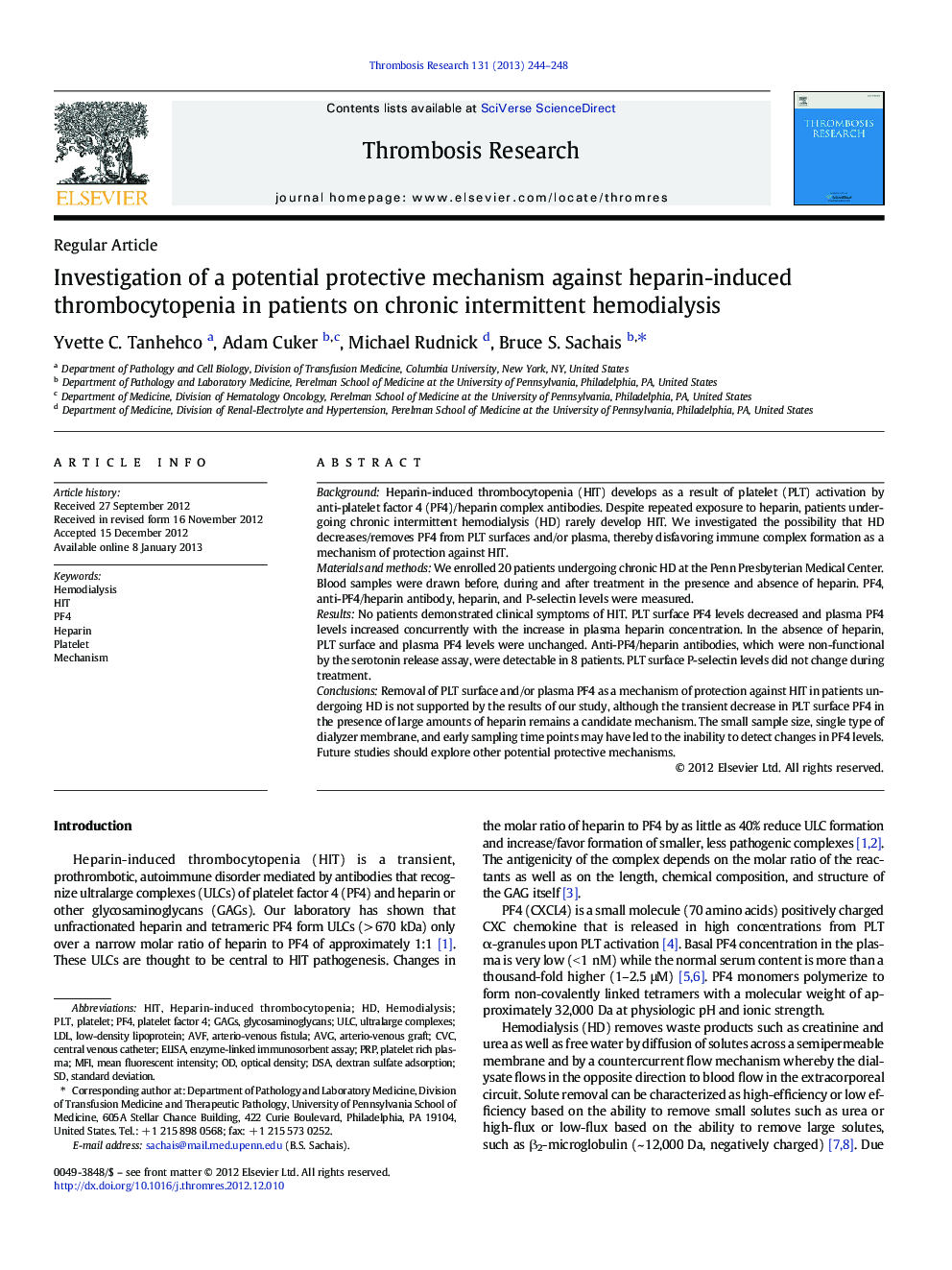| کد مقاله | کد نشریه | سال انتشار | مقاله انگلیسی | نسخه تمام متن |
|---|---|---|---|---|
| 6002693 | 1182977 | 2013 | 5 صفحه PDF | دانلود رایگان |
BackgroundHeparin-induced thrombocytopenia (HIT) develops as a result of platelet (PLT) activation by anti-platelet factor 4 (PF4)/heparin complex antibodies. Despite repeated exposure to heparin, patients undergoing chronic intermittent hemodialysis (HD) rarely develop HIT. We investigated the possibility that HD decreases/removes PF4 from PLT surfaces and/or plasma, thereby disfavoring immune complex formation as a mechanism of protection against HIT.Materials and methodsWe enrolled 20 patients undergoing chronic HD at the Penn Presbyterian Medical Center. Blood samples were drawn before, during and after treatment in the presence and absence of heparin. PF4, anti-PF4/heparin antibody, heparin, and P-selectin levels were measured.ResultsNo patients demonstrated clinical symptoms of HIT. PLT surface PF4 levels decreased and plasma PF4 levels increased concurrently with the increase in plasma heparin concentration. In the absence of heparin, PLT surface and plasma PF4 levels were unchanged. Anti-PF4/heparin antibodies, which were non-functional by the serotonin release assay, were detectable in 8 patients. PLT surface P-selectin levels did not change during treatment.ConclusionsRemoval of PLT surface and/or plasma PF4 as a mechanism of protection against HIT in patients undergoing HD is not supported by the results of our study, although the transient decrease in PLT surface PF4 in the presence of large amounts of heparin remains a candidate mechanism. The small sample size, single type of dialyzer membrane, and early sampling time points may have led to the inability to detect changes in PF4 levels. Future studies should explore other potential protective mechanisms.
Journal: Thrombosis Research - Volume 131, Issue 3, March 2013, Pages 244-248
